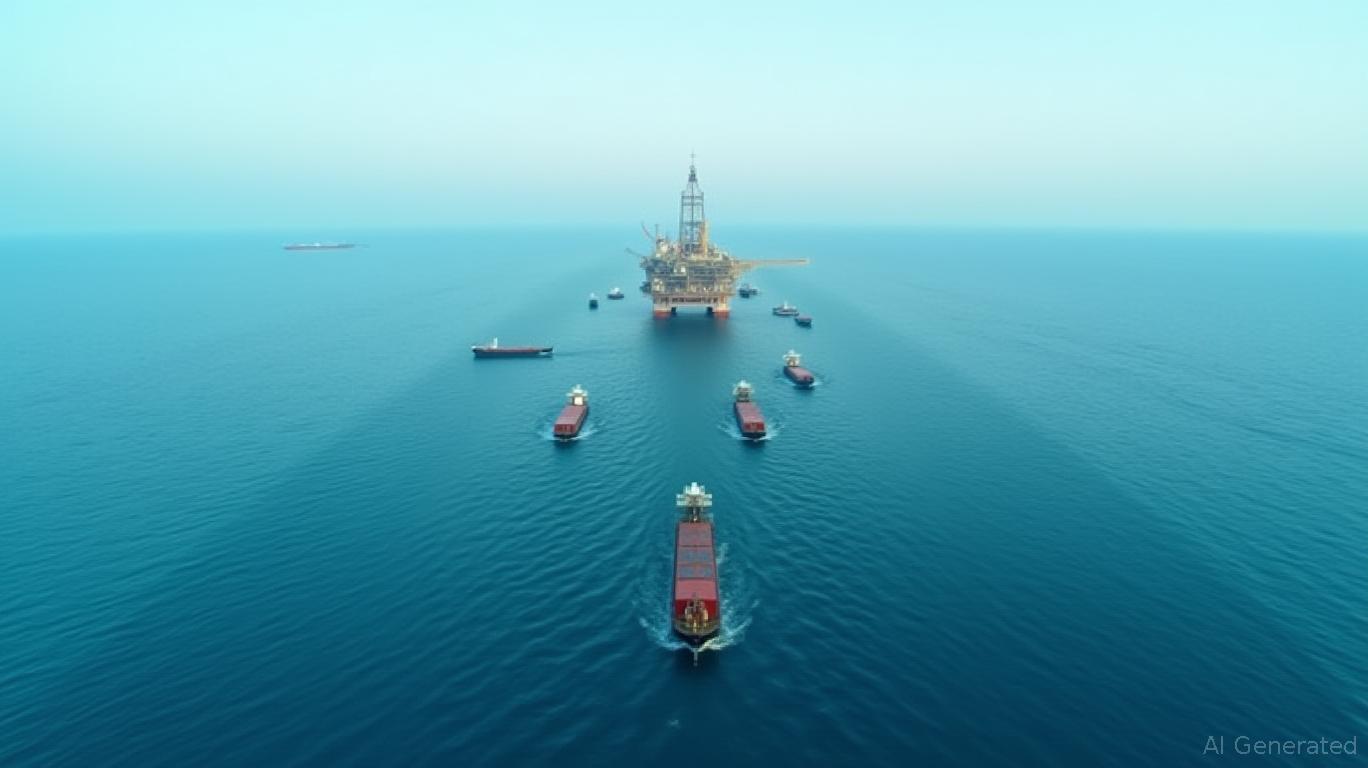Middle East Ceasefire: A Fragile Truce with Profound Investment Implications
The Iran-Israel ceasefire announced on June 23, 2025, marks a temporary pause in a conflict that has rattled global energy markets and tested U.S. geopolitical strategy. While the truce has eased immediate tensions, the underlying instability—driven by unresolved nuclear concerns, shifting sanctions regimes, and regional power struggles—creates both risks and opportunities for investors. Here's how the U.S. military's role in this crisis reshapes the landscape for energy, defense, and sanctions-exposed sectors.
The Energy Market: Volatility Amid Fragile Stability
The ceasefire's most immediate impact was a sharp drop in oil prices, which fell below $70 per barrel as fears of supply disruptions eased. This reflects the region's dual role as both a supplier and a disruptor of global energy flows. The U.S. decision to allow China to continue purchasing Iranian oil further softened prices, signaling a strategic effort to stabilize markets.
However, the truce's fragility introduces uncertainty. If hostilities resume, prices could surge again—especially if Iran's remaining nuclear infrastructure or regional shipping lanes are targeted. Investors in energy stocks like ExxonMobil (XOM) or Chevron (CVX) may benefit from long-term demand stability but should prepare for short-term volatility.
The region's energy infrastructure also presents opportunities. Companies involved in Middle Eastern oilfield services, such as Halliburton (HAL), could see contracts expand if Iran's production ramps up post-sanctions. Meanwhile, the U.S. military's role in securing critical chokepoints like the Strait of Hormuz reinforces the strategic importance of energy logistics firms.

Defense Sectors: Cash Cows in a Climate of Caution
The conflict has underscored the enduring demand for defense technology. U.S. airstrikes on Iranian nuclear sites and missile defense systems—such as the Patriot batteries deployed to Qatar—highlight the utility of advanced weapons. Investors should monitor companies like Raytheon Technologies (RTX) (makers of the Patriot system) and Lockheed Martin (LMT) (producer of F-35 jets used in reconnaissance missions).
Moreover, the ceasefire's shaky hold ensures that military preparedness remains a priority. Israel's emphasis on missile defense and Iran's pursuit of asymmetric warfare capabilities could drive long-term spending on drones, cyber defenses, and intelligence systems.
Sanctions and Iran's Nuclear Shadow: A Two-Edged Sword
The U.S. strike on Iran's nuclear facilities delayed its program but did not eliminate it. With enriched uranium stockpiles still unaccounted for, the region remains on a geopolitical knife's edge. Sanctions relief for Iran—dependent on diplomatic breakthroughs—could unlock opportunities for firms in sectors like automotive (Iran's car market) or infrastructure.
However, the path to normalization is fraught. Iran's demands for sanctions removal in exchange for nuclear concessions clash with U.S. pressure on Israel to halt strikes. This creates a “wait-and-see” scenario for investors. Those with exposure to Iran's economy should proceed cautiously until tangible progress emerges.
Regional Stability: Risks Beyond the Barrel
The ceasefire's ripple effects extend beyond energy. Middle Eastern airspace closures disrupted airlines like Air India, while ports in Qatar and Dubai faced temporary shutdowns. Investors in shipping or aviation stocks should monitor geopolitical heatmaps for renewed disruptions. Meanwhile, the U.S. military's expanded footprint in the region—via bases like Al Udeid—bolsters defense contractors and logistics firms.
Investment Takeaways
- Energy Plays:
- Long crude oil ETFs (USO) for volatility bets.
- Oil majors (XOM, CVX) for steady dividends amid stable demand.
Halliburton (HAL) for Iran's potential production rebound.
Defense Opportunities:
- Raytheon (RTX) and Lockheed Martin (LMT) for missile defense and reconnaissance tech.
Boeing (BA) for military aircraft maintenance contracts.
Sanctions-Linked Caution:
- Avoid direct exposure to Iran until sanctions are visibly lifted.
Monitor European firms (e.g., TotalEnergies) with Middle Eastern assets.
Risk Management:
- Hedge portfolios with gold (GLD) or U.S. Treasuries (IEF) to offset geopolitical spikes.
Conclusion: A Truce, Not an Endgame
The Iran-Israel ceasefire is a tactical pause, not a strategic resolution. Investors must balance the short-term gains in energy and defense with the long-term risks of renewed conflict or nuclear escalation. While the U.S. has stabilized the immediate crisis, the region's volatility ensures that geopolitical agility—and a diversified portfolio—will be key to navigating this landscape.
Stay vigilant, but stay invested where stability meets opportunity.

Comments
No comments yet